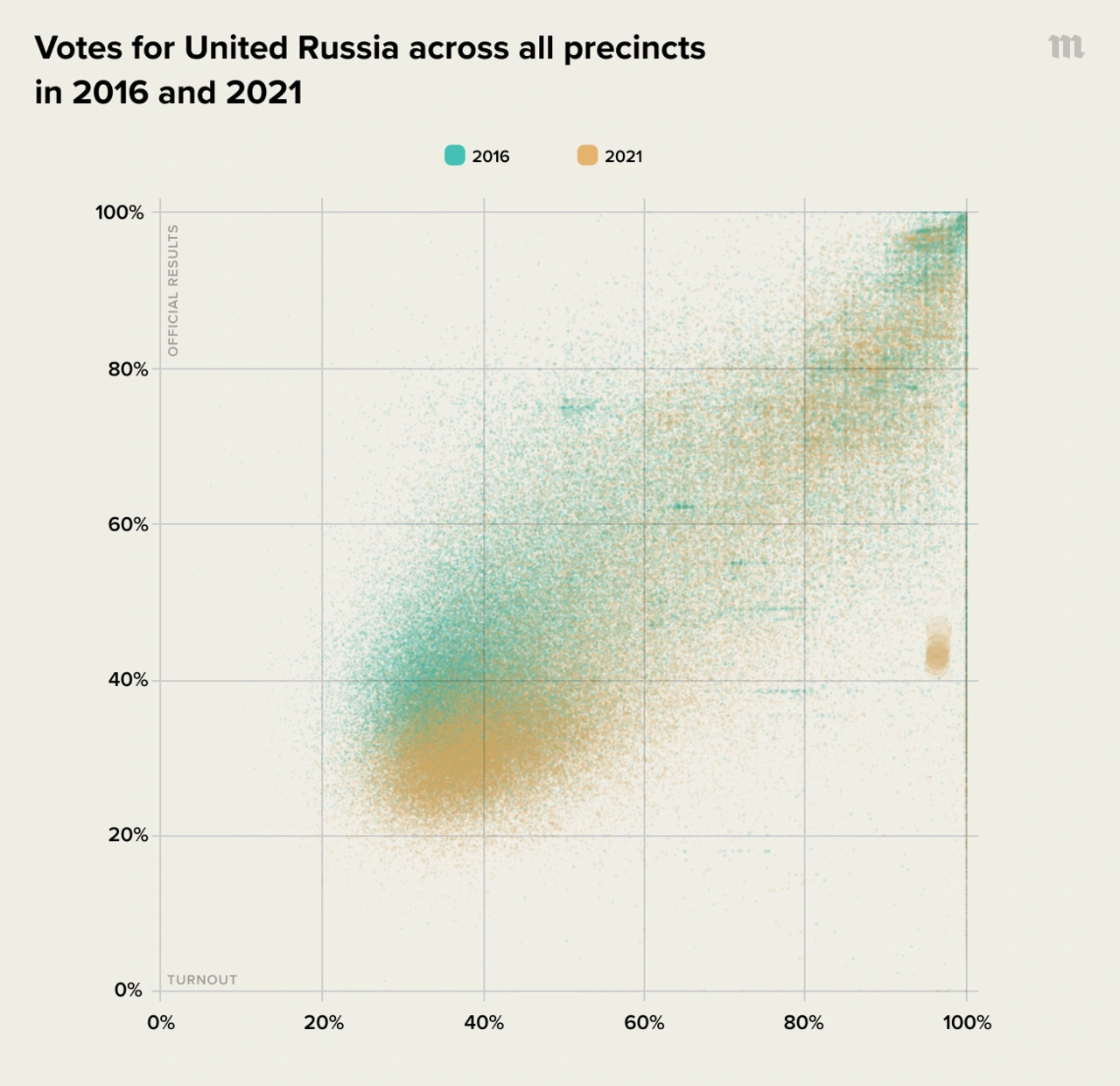It came from above Graphing Russia’s parliamentary election results shows a ruling party declining faster than you’d think
The graphs below are based on voting results released by Russia’s Central Election Commission and compiled by independent analyst Sergey Shpilkin. They demonstrate the relationship between turnout and support for the country’s two most popular political parties, United Russia and the Communist Party (KPRF), at individual polling stations nationwide. (The two small blotches at the right end of both charts represent results in Moscow’s electronic voting.)

The graphs show that the general distribution of votes in 2016 and 2021 was roughly the same, reproducing a “comet” effect when charted visually. In both elections, each party had a relatively homogeneous “core” group of voters at precincts where turnout was moderate (between 30 and 40 percent of registered voters). Moving rightward as turnout at individual precincts grows, however, the “tail” of each party’s comet behaves differently, rising for United Russia and falling for the Communists.
There are multiple explanations for these divergent correlations, but many independent experts say voter fraud is likely the driving force.
More about the 2021 State Duma elections
- The Russian State Duma — 2016 versus 2021
- ‘Electronic voting must die’ Election expert Sergey Shpilkin explains how Russian officials thwart independent analysis
- Dishonoring the beloved city Everything you need to know about St. Petersburg’s ‘dirty elections’
- Flipping Moscow Opposition candidates lose in the Russian capital as electronic voting results roll in at the last minute
- It’s official Meduza dissects Russia’s election results, the success of the Communists and ‘New People,’ and how Navalny’s ‘Smart Vote’ fared
- Just a crosscheck, not a recount Public monitors in Moscow vow to revisit the city’s controversial online ballots
When comparing the results from 2016 and 2021, it’s also clear that United Russia’s performance in “core” precinct clusters deteriorated noticeably (support for the party declined at voting stations that drew the normal 30–40 percent of registered voters), while KPRF won higher percentages of votes in these clusters.
According to Sergey Shpilkin, United Russia won roughly 40 percent of all party-list votes in 2016 at polling stations with “normal turnout.” In 2021, this figure dropped to 30.98 percent, though “normal turnout” barely changed, rising from 36.5 percent to 37.94 percent.
The official results from Russia’s Central Election Commission paint a very different picture, showing that United Russia’s share of party-list votes slipped only marginally between 2016 and 2021, falling from 54.2 percent to 49.8 percent.
Text by Alexander Ershov, translation by Kevin Rothrock
Cover photo: Alexey Malgavko / Reuters / Scanpix / LETA